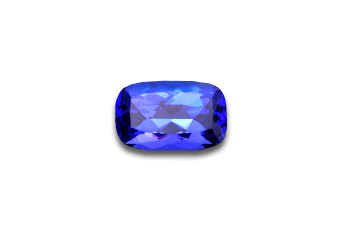TANZANITE
Tanzanite is a newcomer to the gem world. It's a calcium, aluminum silicate that was discovered in 1967. It was found by chance when a Masai tribesman came upon the blue gem. Its source is in the Merelani Hills, near Arusha Tanzania. When mined, it's usually a brown color but moderate heating (500 degrees centigrade) transforms this gem to a beautiful violetish-blue. In 1969, Tiffany & Co. developed the name tanzanite and promoted the gem, which had been previously referred to by its mineral name, zoisite. Since that time, tanzanite's popularity has risen dramatically. It's the 24th wedding anniversary gem and one of the birthstones for December. Unfortunately, the supply of tanzanite may not last more than another 20 years. A distinctive characteristic of tanzanite is its strong pleochroic, or many colored, effect. Depending on the direction in which it's viewed, it may look violetish blue, purplish red or greenish yellow. The face-up appearance of a well-cut tanzanite is almost entirely violetish with slight purple accents. Another important characteristic of tanzanite relates to durability.

Image Above: Although it has a moderate hardness, 6.5 to 7 on the Moh's hardness scale, its toughness, or resistance to breaking, is fair to poor and it's susceptible to thermal shock. This gem should, therefore, be handled with care and should be cleaned with a soft brush and warm soapy water rather than with ultrasonic and steam cleaners.

